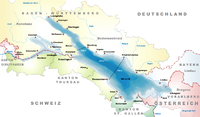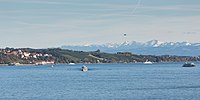Friedrichshafen–Lindau railway
| Friedrichshafen Stadt–Lindau-Aeschach Abzw | |||||||||||||||||||||||||||||||||||||||||||||||||||||||||||||||||||||||||||||||||||||||||||||||||||||||||||||||||||||||||||||||||||||||||||||||||||||||||||||||||||||||||||||||||||||||||||||||||||||||||||||||||||
|---|---|---|---|---|---|---|---|---|---|---|---|---|---|---|---|---|---|---|---|---|---|---|---|---|---|---|---|---|---|---|---|---|---|---|---|---|---|---|---|---|---|---|---|---|---|---|---|---|---|---|---|---|---|---|---|---|---|---|---|---|---|---|---|---|---|---|---|---|---|---|---|---|---|---|---|---|---|---|---|---|---|---|---|---|---|---|---|---|---|---|---|---|---|---|---|---|---|---|---|---|---|---|---|---|---|---|---|---|---|---|---|---|---|---|---|---|---|---|---|---|---|---|---|---|---|---|---|---|---|---|---|---|---|---|---|---|---|---|---|---|---|---|---|---|---|---|---|---|---|---|---|---|---|---|---|---|---|---|---|---|---|---|---|---|---|---|---|---|---|---|---|---|---|---|---|---|---|---|---|---|---|---|---|---|---|---|---|---|---|---|---|---|---|---|---|---|---|---|---|---|---|---|---|---|---|---|---|---|---|---|---|
| Overview | |||||||||||||||||||||||||||||||||||||||||||||||||||||||||||||||||||||||||||||||||||||||||||||||||||||||||||||||||||||||||||||||||||||||||||||||||||||||||||||||||||||||||||||||||||||||||||||||||||||||||||||||||||
| Line number | 4530 | ||||||||||||||||||||||||||||||||||||||||||||||||||||||||||||||||||||||||||||||||||||||||||||||||||||||||||||||||||||||||||||||||||||||||||||||||||||||||||||||||||||||||||||||||||||||||||||||||||||||||||||||||||
| Locale | Baden-Württemberg and Bavaria, Germany | ||||||||||||||||||||||||||||||||||||||||||||||||||||||||||||||||||||||||||||||||||||||||||||||||||||||||||||||||||||||||||||||||||||||||||||||||||||||||||||||||||||||||||||||||||||||||||||||||||||||||||||||||||
| Termini |
| ||||||||||||||||||||||||||||||||||||||||||||||||||||||||||||||||||||||||||||||||||||||||||||||||||||||||||||||||||||||||||||||||||||||||||||||||||||||||||||||||||||||||||||||||||||||||||||||||||||||||||||||||||
| Service | |||||||||||||||||||||||||||||||||||||||||||||||||||||||||||||||||||||||||||||||||||||||||||||||||||||||||||||||||||||||||||||||||||||||||||||||||||||||||||||||||||||||||||||||||||||||||||||||||||||||||||||||||||
| Route number | 751 | ||||||||||||||||||||||||||||||||||||||||||||||||||||||||||||||||||||||||||||||||||||||||||||||||||||||||||||||||||||||||||||||||||||||||||||||||||||||||||||||||||||||||||||||||||||||||||||||||||||||||||||||||||
| Technical | |||||||||||||||||||||||||||||||||||||||||||||||||||||||||||||||||||||||||||||||||||||||||||||||||||||||||||||||||||||||||||||||||||||||||||||||||||||||||||||||||||||||||||||||||||||||||||||||||||||||||||||||||||
| Line length | 22.575 km (14.027 mi) | ||||||||||||||||||||||||||||||||||||||||||||||||||||||||||||||||||||||||||||||||||||||||||||||||||||||||||||||||||||||||||||||||||||||||||||||||||||||||||||||||||||||||||||||||||||||||||||||||||||||||||||||||||
| Track gauge | 1,435 mm (4 ft 8+1⁄2 in) standard gauge | ||||||||||||||||||||||||||||||||||||||||||||||||||||||||||||||||||||||||||||||||||||||||||||||||||||||||||||||||||||||||||||||||||||||||||||||||||||||||||||||||||||||||||||||||||||||||||||||||||||||||||||||||||
| Electrification | 15 kV/16.7 Hz AC overhead catenary | ||||||||||||||||||||||||||||||||||||||||||||||||||||||||||||||||||||||||||||||||||||||||||||||||||||||||||||||||||||||||||||||||||||||||||||||||||||||||||||||||||||||||||||||||||||||||||||||||||||||||||||||||||
| Operating speed | 120 km/h (75 mph) | ||||||||||||||||||||||||||||||||||||||||||||||||||||||||||||||||||||||||||||||||||||||||||||||||||||||||||||||||||||||||||||||||||||||||||||||||||||||||||||||||||||||||||||||||||||||||||||||||||||||||||||||||||
| |||||||||||||||||||||||||||||||||||||||||||||||||||||||||||||||||||||||||||||||||||||||||||||||||||||||||||||||||||||||||||||||||||||||||||||||||||||||||||||||||||||||||||||||||||||||||||||||||||||||||||||||||||
The Friedrichshafen–Lindau railway is a single-track main-line railway in Southern Germany, that has been electrified since December 2021. It connects the rail junction of Friedrichshafen Stadt in Baden-Württemberg with Lindau in Bavaria, where it meets the Buchloe–Lindau railway at a junction in the district of Aeschach. The 22.575 kilometre-long line runs consistently on the north shore of Lake Constance (Bodensee), with the western part lying in Bodenseekreis and the eastern part in the district of Lindau. The line is part of the route known as the Bodenseegürtelbahn (Lake Constance Belt Railway), connecting Radolfzell and Lindau-Insel.
History
[edit]Friedrichshafen was connected to the rail network via the Württemberg Southern Railway (Württembergische Südbahn) in 1847 and Lindau was connected via the Ludwig South-North Railway (Ludwig-Süd-Nord-Bahn) in 1853, but the gap between the two towns was not closed by the Royal Württemberg State Railways and the Royal Bavarian State Railways until 1 October 1899. The entrance buildings at the Bavarian end of the line were built in the architectural style of the Württemberg railways. A 78 metre-long steel bridge was built over the Argen between Langenargen and Kressbronn by Maschinenfabrik Esslingen and has been placed under monument protection. It was replaced by a new steel bridge in 2019 in preparation for the electrification of the line.[2]
A new platform was built at Nonnenhorn station and the main platform was modernised in 2021.[3]
Operations
[edit]The whole line has been integrated into the Bodensee-Oberschwaben Verkehrsverbund (Bodensee-Oberschwaben Transport Association, branded bodo) since 1 January 2018 and is mainly served by local passenger services, usually running twice an hour in each direction. The RB 93 Regionalbahn service usually stops at all stations, while the RE 5 Regional-Express service usually stops only in Kressbronn and Wasserburg (Bodensee) or Langenargen and Nonnenhorn. In addition, the Railjet train pair, Bregenzerwald, between Vienna Airport and Frankfurt (Main) Hauptbahnhof and the Intercity train pair, Bodensee, between Dortmund and Innsbruck run on the line without stopping between Friedrichshafen Stadt and Lindau-Reutin.
One to two pairs of freight trains run daily, pulled by a class 232 or a class 247 locomotive.
The line is equipped with the GSM-R communications system and the Geschwindigkeitsüberwachung Neigetechnik (ZUB 262) train control system.
Gallery
[edit]-
Friedrichshafen Stadt station
-
Friedrichshafen Ost station
-
Eriskirch station
-
Langenargen station
-
Bridge over the Argen (2005)
-
Siding of Marschall gravel works in Kressbronn
-
Kressbronn station
-
Nonnenhorn station
-
Wasserburg station
-
Enzisweiler station
-
Lindau-Aeschach station
-
Signal box at Lindau-Aeschach junction
References
[edit]Footnotes
[edit]- ^ Eisenbahnatlas Deutschland [German railway atlas]. Schweers + Wall. 2017. p. 112. ISBN 978-3-89494-146-8.
- ^ "Erneuerung der Argenbrücke" (PDF) (in German). bauprojekte.deutschebahn.com. Retrieved 11 January 2022.
- ^ "Vollständige Modernisierung der Station Nonnenhorn" (in German). Deutsche Bahn. 26 November 2021. Retrieved 11 January 2022.
Sources
[edit]- Niedderer, Gösta (2017). "Potential-, Kosten- und Erlösschätzung für eine elektrifizierte Bodenseegürtelbahn". Eisenbahn-Revue International (in German) (11): 577–581.















